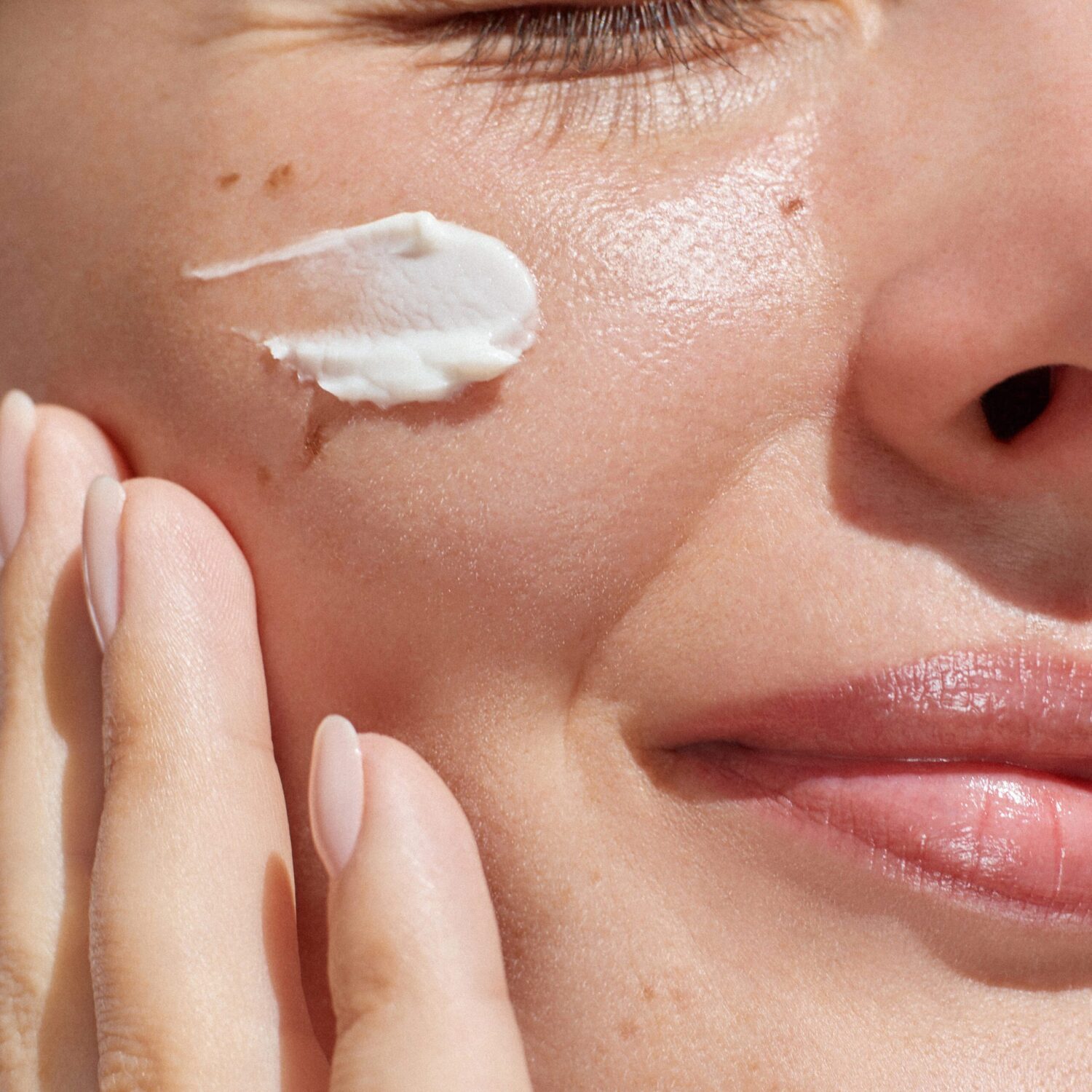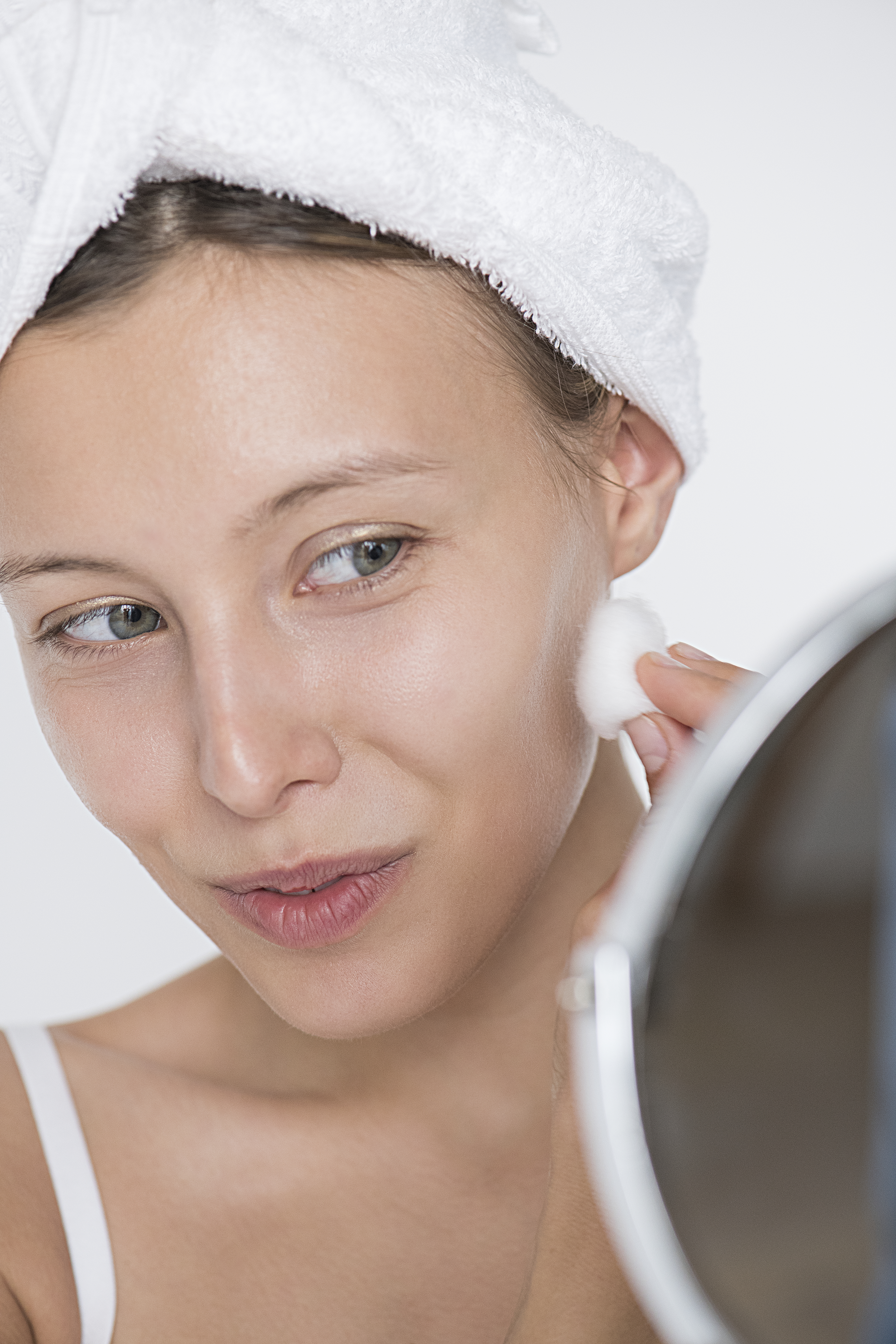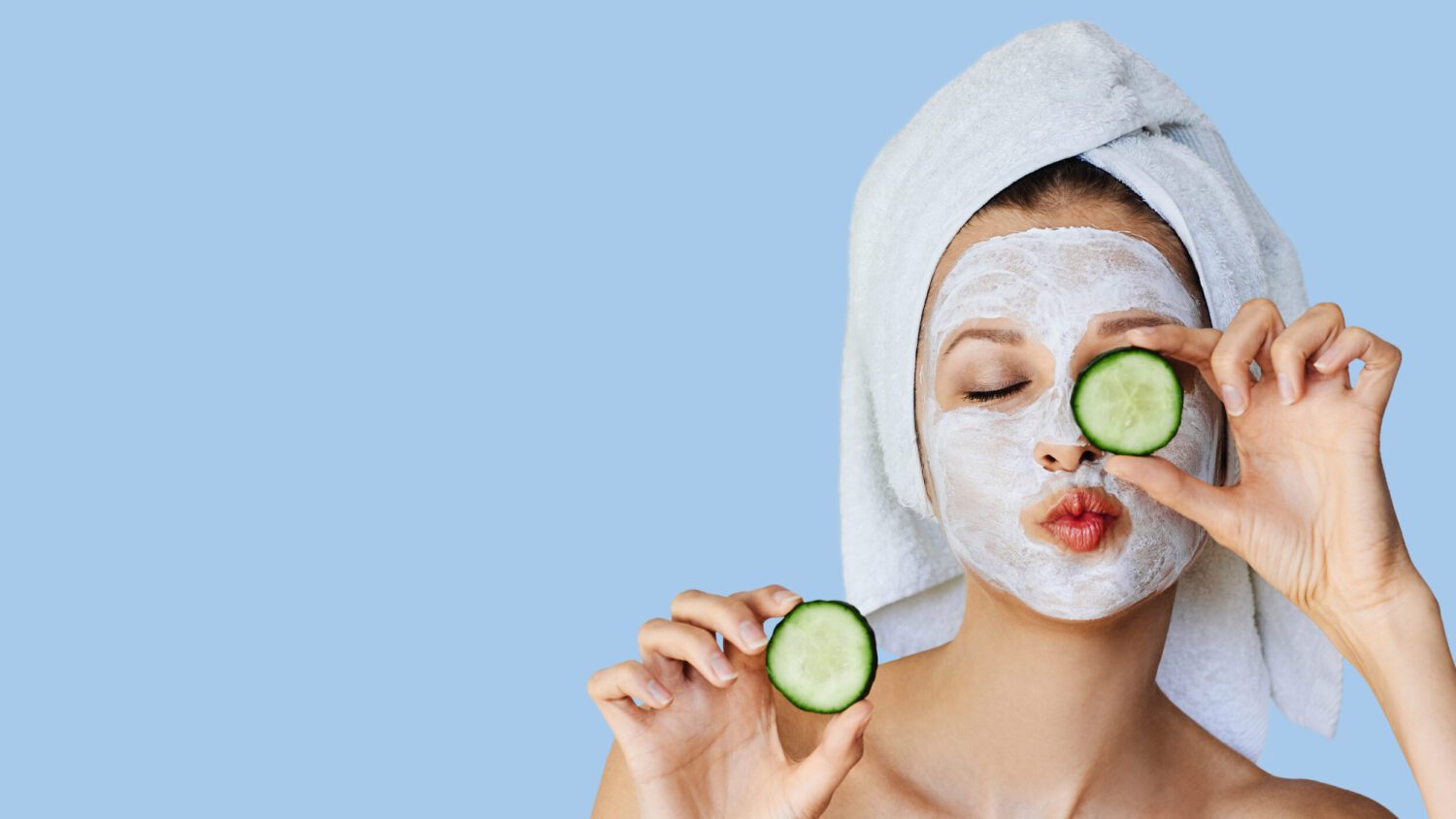15 Toxic Ingredients to Avoid in Skincare Products

This post may contain affiliate links and we may earn a small commission from qualifying purchases. See full disclosure here.
This post goes over the top 15 toxic ingredients to avoid in skincare products.
Have you ever looked at the back of your favorite lotion and felt like you needed a chemistry degree to understand what’s in it? Yeah, me too. But what’s even scarier is that some of those unpronounceable ingredients could be doing more harm than good to your skin, and even your health.
Think about it, we slather these products on our face every single day, hoping for glowing, healthy skin. But what if, without realizing it, we’re actually exposing ourselves to toxic chemicals? It’s enough to make you want to toss out your entire bathroom cabinet, right?
Don’t worry, I’ve been there. That’s why I dove deep into the world of skincare ingredients and compiled a list of the top 15 toxic culprits you need to avoid. From hormone disruptors hiding in your moisturizer to skin irritants lurking in your sunscreen, I’m about to spill all the tea on these sneaky chemicals.
We’re also going to break down exactly why these ingredients are harmful, where you’re likely to find them, and most importantly, what safer alternatives you can switch to. Because everyone deserves to have a skincare routine that actually cares for their skin, not damages it.
Let’s dive into the 15 toxic ingredients you need to avoid, starting now!
15 Toxic Ingredients to Avoid in Skincare Products

1. Formaldehyde
A strong-smelling gas used as a preservative and disinfectant.
Also Known As: Quaternium-15, DMDM hydantoin, imidazolidinyl urea, diazolidinyl urea, polyoxymethylene urea, and others
Found In: Nail polish, hair straightening products, eyelash glue, and some shampoos, conditioners, and body washes
Why Avoid: Formaldehyde is a known carcinogen. It can also cause allergic reactions and irritate the skin, throat, and eyes.
Related: The 17 Best Non Toxic Nail Polish Brands That Actually Last
2. 1,4-Dioxane
A byproduct of a process called ethoxylation, which is used to make other ingredients milder and less harsh. It often hides behind names like Sodium Laurel Sulfate, Sodium Laureate Sulfate, and PEG (Polyethylene Glycols).
Also Known As: Sodium Laurel Sulfate, Sodium Laureate Sulfate, and PEG (Polyethylene Glycols)
Found In: Shampoos, body washes, bubble bath, and some cosmetics
Why Avoid: 1,4-Dioxane is a known animal carcinogen and suspected human carcinogen. It’s also easily absorbed through the skin.
3. Mercury
A heavy metal that can accumulate in the body and cause neurological damage.
Found In: Some skin lightening products and old-fashioned thermometers (avoid those!)
Why Avoid: Mercury is a neurotoxin that can damage the brain and nervous system, especially in developing fetuses and children.
4. Hydroquinone
A skin-lightening agent used to reduce the appearance of dark spots, melasma, and other forms of hyperpigmentation.
Found In: Skin lighteners and bleaching creams
Why Avoid: Hydroquinone can cause ochronosis, a blue-black discoloration of the skin. It can also irritate the skin and may increase the risk of cancer.
5. PFAS (Per- and Polyfluoroalkyl Substances)
A group of man-made chemicals used for their water- and grease-resistant properties.
Found In: Some makeup and skincare products
Why Avoid: PFAS have been linked to cancer, thyroid problems, and other health issues. They are also persistent in the environment, meaning they don’t break down easily.
6. Coal Tar Dyes
Synthetic dyes used to give products a specific color, often derived from coal tar.
Also Known As: p-phenylenediamine, “CI” + number, “FD&C” + number, “D&C” + number
Found In: Hair dyes, color cosmetics, and some skincare products
Why Avoid: Some coal tar dyes have been linked to cancer, while others can cause skin irritation and allergic reactions.
7. BHA (Butylated Hydroxyanisole) & BHT (Butylated Hydroxytoluene)
Synthetic antioxidants used to preserve products and prevent them from going rancid.
Found In: Moisturizers, lipsticks, and other cosmetics
Why Avoid: These preservatives can irritate the skin and eyes. BHA, in particular, is a suspected endocrine disruptor and possible human carcinogen.
8. DEA-Related Ingredients
Compounds used as emulsifiers or foaming agents in cosmetics and personal care products.
Also Known As: Triethanolamine, diethanolamine, DEA, TEA, cocamide DEA, and others
Found In: Moisturizers, shaving creams, color cosmetics, and fragrances
Why Avoid: DEA-related ingredients can cause cancer, bioaccumulation (building up in the body), organ system toxicity, and skin/eye irritation. They are banned in the EU.
9. Phthalates
Chemicals used to make plastics more flexible and durable. They are also used as solvents and fixatives in fragrances.
Found In: Fragrances, nail polish, hair spray, and some lotions
Why Avoid: Phthalates are endocrine disruptors that can interfere with hormone function and may harm the reproductive system.
10. Parabens
Synthetic preservatives commonly used to extend the shelf life of products.
Also Known As: Methylparaben, propylparaben, butylparaben, and ethylparaben
Found In: A wide range of cosmetics and skincare products
Why Avoid: Parabens are endocrine disruptors, interfering with hormone function and potentially increasing the risk of breast cancer and reproductive problems.
11. Benzophenone
A type of organic compound used in sunscreens and other personal care products to absorb UV radiation.
Also Known As: Oxybenzone, sulisobenzone, dioxybenzone, and ingredients containing the word “benzophenone”
Found In: Sunscreens and other skincare products
Why Avoid: Benzophenone-type ingredients absorb UV rays, but they can also disrupt hormones and may contribute to skin allergies. There are concerns about their potential to cause cancer, though more research is needed.
12. Polyacrylamides
Water-soluble polymers used as thickeners, emulsifiers, and film-formers in cosmetics and personal care products.
Found In: Hair gels, lotions, and makeup
Why Avoid: Polyacrylamides can irritate the skin and eyes. Some types may also be contaminated with acrylamide, a probable human carcinogen.
13. Siloxanes
Silicone-based compounds used for their smoothing and water-resistant properties.
Also Known As: Cyclomethicone, dimethicone, and ingredients ending in “-siloxane”
Found In: Moisturizers, makeup, hair products, and deodorant
Why Avoid: These silicone-based ingredients can clog pores and disrupt hormone function. Some types are persistent in the environment and can accumulate in aquatic life.
14. Triclosan
An antibacterial and antifungal agent.
Found In: Some antibacterial soaps and hand sanitizers
Why Avoid: Triclosan can disrupt thyroid function and contribute to antibiotic resistance. It’s been banned from soap in the U.S. but may still be found in other products.
15. Phenoxyethanol
A common preservative used in cosmetics and personal care products.
Found In: Many cosmetics and skincare products as a preservative
Why Avoid: While considered safer than parabens, phenoxyethanol can still cause skin irritation, eczema, and allergic reactions in some people.
Want to keep this list of toxic ingredients to avoid in skincare handy? Pin this image to your Pinterest board so you can reference it for later!

How to Read Ingredient Labels Like a Pro
Now that you know the toxic ingredients to avoid, you might be wondering, “How do I actually spot these on a label?”
Don’t worry, I’ve got your back. Here are some tips:
- Start at the Top: Ingredients are listed in order of concentration, from highest to lowest. If a toxic ingredient is listed near the beginning, it’s a red flag.
- Learn the Lingo: Familiarize yourself with the different names for common toxic ingredients (those “also known as” names we talked about).
- Watch Out for Fragrance: “Fragrance” or “parfum” on a label can mean hundreds of hidden chemicals, many of which are potential irritants or hormone disruptors. If you’re sensitive, it’s best to avoid it.
- Check for Certifications: Look for products that are certified organic or natural by reputable organizations. These usually have stricter standards for ingredients.
- Use Online Resources: The EWG’s Skin Deep database is an excellent tool for checking the safety ratings of specific products and ingredients.
Free Resources
Ready to ditch the toxins and embrace a cleaner, greener beauty routine? Here are some helpful resources and brands to get you started:
- EWG Skin Deep Database – This comprehensive database rates the toxicity of thousands of skincare products and ingredients, making it a valuable tool for informed decision-making.
- Campaign for Safe Cosmetics – This non-profit organization advocates for safer cosmetics and provides information on toxic ingredients and safer alternatives.
- Think Dirty App – Download this app to your phone to easily scan product barcodes and get instant information on potential toxins.
Safe Skincare Brands to Explore
While many brands are making strides towards cleaner formulations, here are a few that are known for their commitment to safe and effective ingredients:
- EWG Verified – Look for products with the EWG Verified mark, which indicates that they meet rigorous standards for ingredient safety and transparency. You can find a list of EWG Verified brands and products on their website.
- Goop’s Clean Beauty Section – Goop curates a selection of clean beauty products that meet their standards for ingredient safety and efficacy.
- The Detox Market – Another great online destination for clean beauty, The Detox Market offers a variety of brands and products for all skin types and concerns.
- Drunk Elephant – This popular brand focuses on using biocompatible ingredients that work with your skin, not against it.
- Herbivore Botanicals – This brand uses natural, plant-based ingredients and sustainable packaging.
So there you have it – the 15 toxic ingredients lurking in your skincare products that you need to ditch ASAP. It might feel a bit overwhelming at first, but trust me, your skin (and your overall health) will thank you for making the switch to cleaner, safer products.
Remember, the best way to find brands and products that work for you is to do your research and experiment. You deserve skincare that nourishes your skin without compromising your health!
Start small by swapping out one or two products at a time. Explore the resources and brands mentioned, and don’t be afraid to experiment to find what works best for you.
Most importantly, don’t get discouraged! There are so many amazing clean beauty options available now, so you can still have an effective skincare routine without the nasty toxins. Your journey to healthier, happier skin starts with one small step.
This post was about the 15 toxic ingredients to avoid in skincare products.







